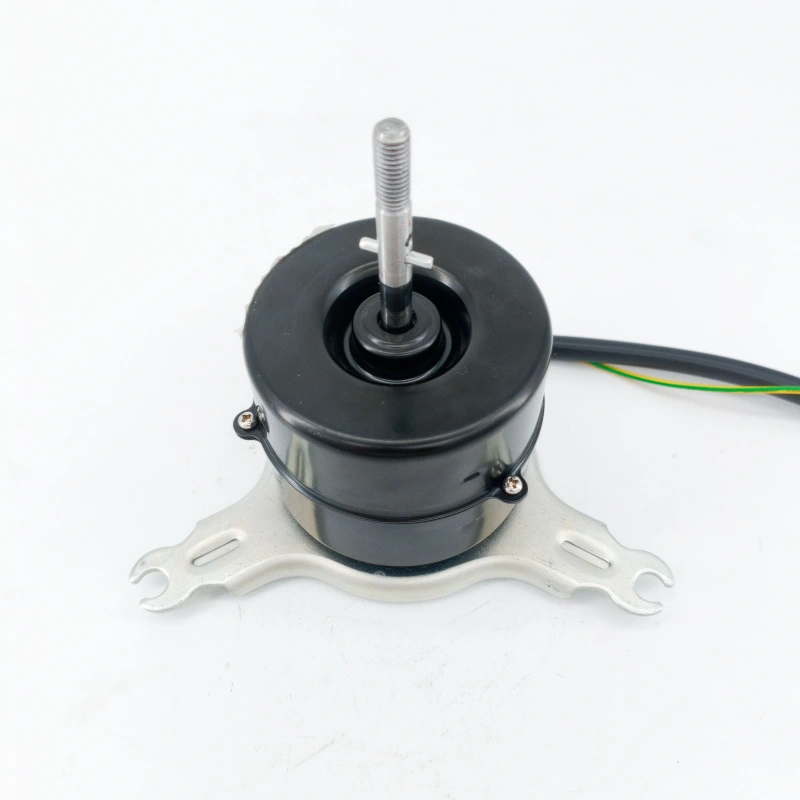The speed stability of a DC motor directly determines its application value. Especially in scenarios such as precision manufacturing and automated conveying, speed fluctuations often trigger chain problems. To solve this issue, it is necessary to start from the motor’s structural characteristics and working principle, conduct a comprehensive analysis in combination with the electrical control and mechanical transmission systems, identify the core crux, and take targeted measures.
I. Core Causes of Speed Fluctuation
The speed formula of a DC motor is n = (U – IaRa) / (CeΦ) (where n is the speed, U is the armature voltage, Ia is the armature current, Ra is the armature resistance, Ce is the back EMF constant, and Φ is the excitation flux). The instability of any parameter in the formula will cause speed fluctuation, which can be specifically divided into three categories.
1. Abnormal Electrical System: Direct Inducer of Parameter Fluctuation
Unstable armature power supply is the most common factor. For example, excessive ripple in the output of the DC power supply, poor wire contact, or sudden voltage drop caused by insufficient wire diameter will all lead to abnormal fluctuations in the U value in the formula. Faults in the excitation circuit are also crucial. In a series-excited motor, the excitation winding is connected in series with the armature; if there is a partial short circuit in the winding, Φ will decrease, resulting in a sudden increase in speed. In a shunt-excited motor, poor contact of the excitation circuit resistance will cause changes in the excitation current, leading to Φ fluctuation. In addition, inter-turn short circuits in the armature winding or oxidation of the commutator segments will cause instantaneous mutations in Ia, and the voltage drop generated through Ra will change accordingly, disrupting the speed balance.
2. Mechanical Structure Issues: Interfering Factors in Force Transmission
The connection method between the motor and the load directly affects speed stability. Misalignment in coupling installation (such as misalignment and looseness) will cause periodic fluctuations in the load torque, leading to severe fluctuations in Ia with changes in the load. Bearing wear or poor lubrication will increase the mechanical friction resistance; the random change of this resistance will break the balance of “electromagnetic torque = load torque + friction torque” and cause speed fluctuation. If the motor itself has a rotor unbalance problem, the centrifugal force generated during high-speed rotation will cause mechanical vibration, further exacerbating torque fluctuation.
3. Control and Environmental Factors: System Regulation and External Interference
Mismatched parameters of the speed control system are an important cause. For example, an excessively large proportional coefficient of the PID controller easily leads to overshoot, and an excessively long integral time fails to suppress steady-state errors in a timely manner, causing the speed to oscillate around the target value. External environmental interference cannot be ignored either: strong electromagnetic radiation will interfere with control signals, and temperature changes will affect the resistance values of Ra and the excitation winding. When the temperature rises, Ra increases; if U remains unchanged, Ia and electromagnetic torque will decrease, eventually leading to a drop in speed.
II. Systematic Solutions
1. Optimize the Electrical System to Stabilize Core Parameters
First, inspect the power supply system: replace the DC power supply with high quality (ripple factor ≤ 1%), or connect a capacitor in parallel at the power output terminal for filtering. For wire issues, it is necessary to ensure that the wire cross-sectional area meets the current requirements (current density ≤ 6A/mm²), re-tighten the terminal blocks, and use silver-plated contacts if necessary to reduce contact resistance. Second, overhaul the windings: detect the insulation of the armature and excitation windings with a megohmmeter. If there is a short circuit, rewind the windings and ensure the winding accuracy (inter-turn error ≤ 0.5%). For oxidized commutator segments, polish them with fine sandpaper and apply conductive grease; at the same time, check the contact area between the brush and the commutator segments to ensure it is not less than 85%.
2. Repair the Mechanical Structure to Eliminate Transmission Interference
For connection issues, re-calibrate the coupling to ensure that the radial runout is ≤ 0.05mm and the end face runout is ≤ 0.03mm. If the load fluctuation is large, a flexible coupling can be used to absorb shocks. For bearing faults, high-precision bearings of the same model (such as grade P5) should be replaced in a timely manner, and high-temperature resistant grease should be regularly added (supplemented every 500 hours of operation). If the rotor is unbalanced, perform a dynamic balance test and control the unbalance within 5g·cm by adding balance weights at both ends of the rotor.
3. Improve Control Strategies to Isolate External Interference
Re-tune the PID parameters and determine the optimal parameters through step response tests: the proportional coefficient ensures the response speed meets requirements, the integral time eliminates static errors, and the derivative time suppresses overshoot. For electromagnetic interference, a metal shielding layer can be wrapped around the control circuit, and the shielding layer should be grounded at a single point. To address the impact of temperature, install a temperature sensor on the motor and realize temperature compensation of the armature voltage through the control system—when the temperature rises by 10℃, the armature voltage is automatically increased by 1%~2%. In addition, perform regular maintenance on the motor, remove surface dust, and inspect the cooling system to ensure the motor operates within a temperature range of 40℃~60℃.
Through the above systematic measures in electrical, mechanical, and control aspects, the speed fluctuation problem of DC motors can be effectively solved. The speed fluctuation rate can be controlled within ±1%, which meets the requirements of precision operation and extends the service life of the motor by more than 30%.



